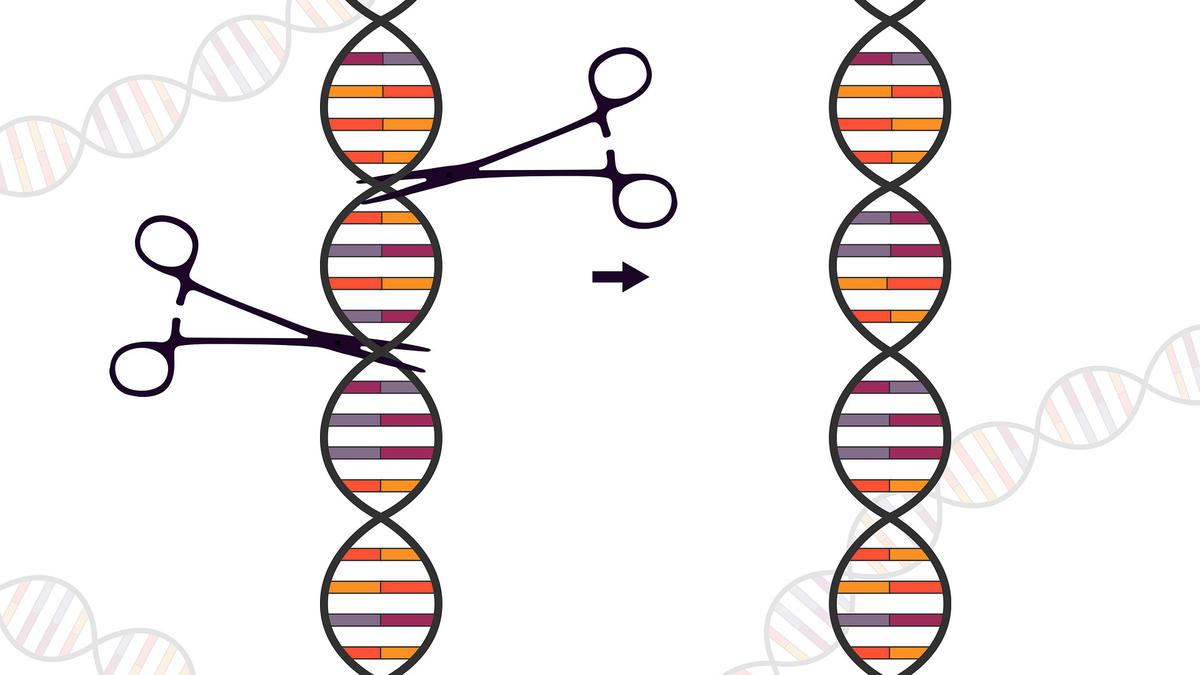
The era of CRISPR therapeutics is here – what can we expect? | Explained Premium
The Hindu
Two geneticists explain the groundbreaking CRISPR-based therapies approved for sickle-cell disease and β-thalassaemia, and other genetic therapeutics in development, including base-editing and prime-editing.
Imagine a future where genetic anomalies can be precisely targeted and corrected using genome editing – a giant leap from our ability to sequence or read human genomes two decades ago. The world of medicine is currently abuzz with news of regulatory agencies’ approval for two highly anticipated CRISPR-based therapies for sickle-cell disease and β-thalassaemia in the U.K. and the U.S.
The approval is groundbreaking because it augurs an era that could transform the lives of millions of patients and families grappling with these inherited blood disorders. To put this in perspective, more than a million people worldwide suffer from thalassemia, of whom 100,000 depend on regular blood transfusions. Another 20 million people around the world are estimated to be suffering from sickle-cell anaemia.
The discovery of the CRISPR system was the result of almost three decades of pure academic pursuit. Clustered regularly interspaced short palindromic repeats (CRISPR) are DNA elements that Spanish researchers discovered in archaea in 1993, and named and described later in a number of bacterial genomes.
These elements contain pieces of genetic material derived from viruses that infect bacteria (i.e. bacteriophages) and a set of proteins called Cas, or CRISPR-associated. Researchers tried to explain the elements’ effect on antiviral immunity in 2005, but later found that CRISPR + Cas proteins could detect and prevent viral infections. That is, the two formed an antiviral defence system and helped bacteria ‘acquire’ resistance.
Then, in 2010, scientists demonstrated that CRISPR + specific proteins called Cas9 had the ability to cut double-stranded DNA at specific points. They also found the RNAs molecules that guided the Cas9 proteins to specific positions on a genome. And in 2012, researchers figured out a way to create synthetic RNA that could bind to Cas9 and guide it to a specific point on a DNA, where it could edit the DNA.
This pathbreaking work came from the labs of Emmanuelle Charpentier and Jennifer Doudna, and they were awarded the 2020 Nobel Prize in chemistry for it.
Virginijus Siksnys and his colleagues published similar work a few months later (despite having submitted it to the journal much earlier). This study also suggested that Cas9 could be targeted to specific genome locations by crispr RNA (crRNA).

The crowning achievement of American inventor William Painter’s career was, well, inventing the now-ubiquitous crown bottle cap. Oh, and not to forget, the bottle cap lifter to open these crowns, or what we simply call the bottle openers. A.S.Ganesh tells you how Painter changed the bottling industry forever…










